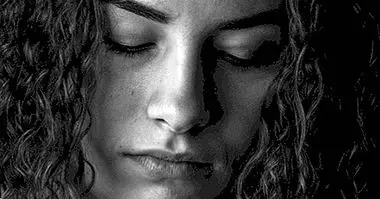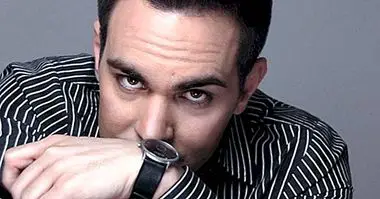The top 10 types of sexual orientation
It is conflictive to talk about the different types of sexual orientations . We already know that defining is limiting, and this becomes especially obvious when what is being defined is something as subjective as the patterns of sexual attraction and the different criteria used to determine whether something is sexually attractive or not.
How to name what we think is desirable? Is not sexuality lived as something linked to specific moments, contexts and moods?
The main types of sexual orientation
What attracts us (or not) of people are not concrete and immutable elements that belong to them and that can be worn like someone who wears a new shirt. We can never say with certainty where the desire that comes from someone in particular comes from, let alone assure that this element will always be attractive to us.
But nevertheless, It is increasingly common to talk about a range of types of sexual orientation that over time is gaining in breadth and variety. It's been a long time since homosexuality has ceased to be the only alternative to heterosexuality, and as a consequence our notion of what sexual orientation is or can be is increasingly complex and full of nuances.
Categories created by science?
The fact that more and more proposals are being formulated to diversify the variants of sexual orientation does not take away the fact that the dichotomy "homosexuality - heterosexuality" continues to have vigor and in many circles people and their inclinations continue to be classified in these two categories. . The reason is that these two concepts have an objective basis: the biological sex of people. The other types of sexual orientation, however, are based on subjective phenomena, for good and for bad .
The denominations or labels to define multiple types of sexuality are not born from the field of psychology or biology, but rather appear as part of a socially rooted initiative (historically linked to movements in favor of equality) to claim and give visibility to ways of living sexuality that are eclipsed by the norm: heterosexuality.
That means that behind the creation of these categories to name the different types of sexual orientations there is no pretense to label each and every one of the variants that we could identify if we put ourselves to it, and neither do we want to find ways of living sex that matches certain organic bases (unusual neuronal connections between certain areas, an atypical functioning of some parts of the brain, etc.).
They are not concepts made to serve the purposes of science, but to achieve a social impact. In particular, what is tried when using these terms is that they are more sensitive to people who tend to live a class of alternative sexual orientation.
Can you talk about the most important types of sexual orientation?
If defining what is and what is not a different kind of sexual orientation is already complicated, it is even more difficult to talk about which are the most important. It is subjective and depends on arbitrary criteria to order sexual orientations of greater or lesser importance and that, in short, they do not tell us anything about whether one is more valid than another.
In this case, I have selected the types of sexual orientation that tend to appear more in the media so that people interested in the subject can begin to inquire.
Types of sexual orientation
Here is an explanation of each of the most studied types of sexual orientation.
1. Heterosexuality
It's sexual orientation defined by the attraction towards people of the opposite sex , exclusively. It is possibly the most common kind of sexual orientation.
2. Homosexuality
Characterized by the sexual attraction directed exclusively towards people of the same sex . Homosexual men are popularly known as gays, while women are lesbians.
3. Bisexuality
Sexual attraction towards people of the same sex and the opposite sex , although not necessarily with the same frequency or intensity in one or the other case.
4. Pansexuality
Sexual attraction towards some people , regardless of their biological sex or gender identity. The difference between pansexuality and bisexuality is that in the second case sexual attraction is still experienced through gender categories, while in pansexuality this does not happen. To know more you can read the article about this sexual orientation.
5. Demisexuality
The demisexuality is described as the appearance of sexual attraction only in some cases in which a strong emotional or intimate bond has previously been established .
6. Lithsexuality
People with this type of sexual orientation they experience attraction to other people, but do not feel the need to be reciprocated .
7. Autosexuality
In autosexuality, the attraction is experienced towards oneself , without this having to be synonymous with narcissism. It can be understood as a way of feeding affection or self-love.
8. Antrosexuality
This concept It serves so that people who experience their sexuality can identify with it without knowing in what category they identify themselves and / or without feeling the need to be classified in any of them.
9. Polysexuality
In this type of sexual orientation you feel attracted to various groups of people with specific gender identities . According to the criterion used to classify, it can be understood that polysexuality overlaps with other sexual orientations such as pansexuality.
10. Asexuality
The asexuality It serves to name the lack of sexual attraction . It is often considered that it is not part of the diversity of sexual orientations, since it is their negation. You can read more about asexuality in this article.



















